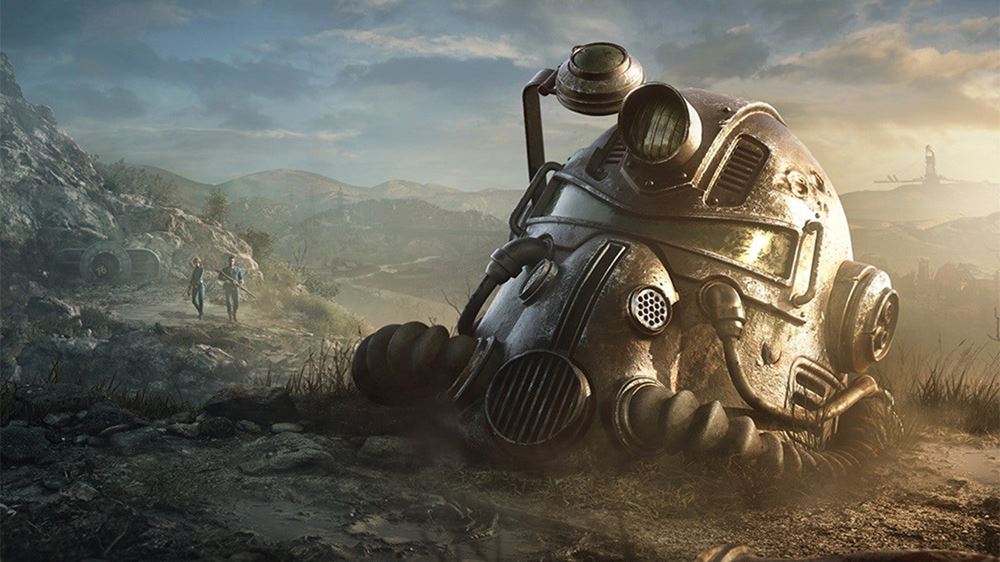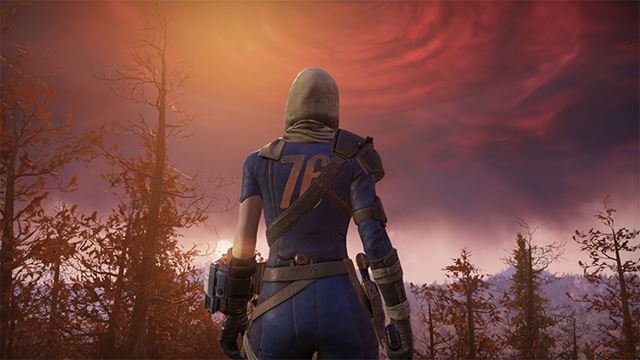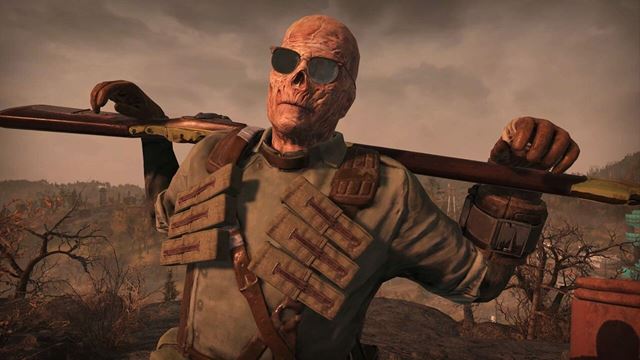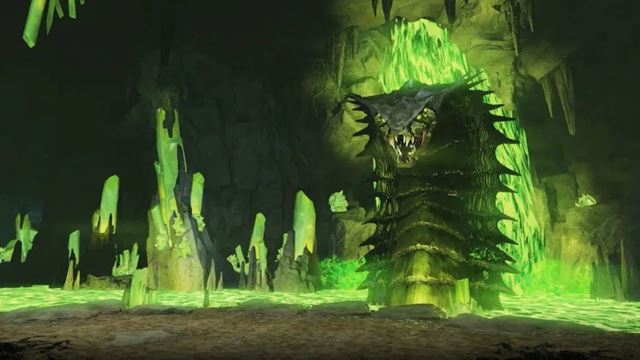|
|
From Show to Game: Jonathan Rush Reflects on the Influx of New Players to Fallout 7610/31/2024
In a world where gaming and storytelling intertwine, Fallout 76 continues to evolve, welcoming a fresh wave of players inspired by the success of Amazon's Fallout series. Jonathan Rush, the creative director behind the title, shares his insights on h
|
In a world where gaming and storytelling intertwine, Fallout 76 continues to evolve, welcoming a fresh wave of players inspired by the success of Amazon's Fallout series. Jonathan Rush, the creative director behind the title, shares his insights on how the game's narrative adapts to its community and what players can expect next. With a focus on collaboration and an ever-expanding universe, Fallout 76 aims to enrich the player experience while remaining true to its roots. In this exclusive interview, Rush discusses the importance of community feedback, the impact of the show, and the exciting new features on the horizon for the game.
How did you react when your game saw an influx of new players after the success of Amazon's Fallout series?
That’s a good question. As you know, we've been working on this game for the past six years, so seeing the large influx of people joining in for the show was really exciting. It was great to see how closely the show captured the tone, look, and feel of Fallout, staying true to what fans love. Watching all those new players come into Fallout 76 and Fallout 4 told me they loved that story and wanted more of it. It was inspiring for the team and really exciting to see everyone enjoying themselves.
Can you share any statistics about the game after this influx? How many players are active now, and how much time do they spend in the game?
Sure. While I can't share exact numbers, I can say we have a lot of players, and they’re spending a significant amount of time in the game. One of my main goals is to make the game engaging enough that players always have something to do—almost like a theme park. They might come in to complete a quest, then see the Scorchbeast Queen event pop up and jump in for that, then notice another event starting. Players stay in the game for a while, enjoying the various loops and events. It’s a lot of fun.
Are you adapting the game for these new players? Are you considering options for high-level players to try different things?
Yes, absolutely. A few patches ago, we revisited the 'out-of-the-vault' experience. Now, players can either emerge as a new dweller or choose from several level-20 loadouts to ease them in. We’ve also added more points of interest around the vault, helping introduce players to new factions and immersing them in the story sooner. So, yes, we're definitely making adjustments for new players, and we have plans to continue adding features, patch by patch, to make it even easier for newcomers to get involved.
The show was a huge success—lots of viewers and awards. Has it influenced your plans for the game?
Well, you’d think it might, but since the show aligns so closely with what Fallout is, it actually reinforces our current direction. It gives us confidence to keep telling the kinds of stories that have always been at the heart of Fallout, whether from earlier games or the show itself. It’s been fantastic to see people enjoying it so much; it really affirms that we’re on the right track.
The game launched six years ago, and Milestone Zero marks its 20th update. How do you see the game evolving since its release?
That’s a good question. I've always seen it as one overarching story. When we first released, players emerged from the vault to find an empty world—no physical characters, but traces of people were left in holotapes, notes, or abandoned items, almost like a prelude in a book setting the stage. Over time, characters from neighboring regions started moving into West Virginia, bringing groups like the Brotherhood of Steel, Raiders, and Settlers. The latest update is the next chapter in that story. We’ve introduced Skyline Valley, a new region with a faction called the Lost—hence the name, as they’ve remained hidden. We’re expanding the region further, adding caravans and more ways for players to continue telling their own stories.
What’s your process for creating new content? Do you take player feedback into account? And do you look back at older Fallout games for inspiration?
Having played all the Fallout games, I think drawing inspiration from them is just part of who I am—it’s ingrained in my DNA. As for player feedback, we’re very attentive to it. While we may not post much, we’re constantly reading everything on Reddit, watching YouTube videos, and staying on top of community sentiment. Bethesda Game Studios has an amazing community that loves to share their thoughts, whether positive or negative, and it’s all valuable to us. We look at the feedback and try to identify larger patterns, like a demand for more in-game content. We use that kind of insight to shape our roadmap, rather than focusing on specific requests, like adding a particular item. We’re always looking at the bigger picture to guide our content direction.
What can players expect next?
Gleaming Depths is a raid, and it’s different from our previous raid attempts. This one is designed with structured, challenging encounters for high-level players that require teamwork. For example, one of the robots has a shield generator on its back, so you need one player distracting it from the front while another takes out the generator. There’s a lot of strategy and coordination involved. We’re also adding a ping system in this patch, allowing players without mics to communicate by pointing to things in the environment—like ‘go here,’ ‘target this,’ or ‘move there’—which should enhance the experience.
You’re actually the first to hear me officially call Gleaming Depths a raid! One of the best parts about working at Bethesda Game Studios is that we have more great ideas than time to implement them. If someone says, ‘Let’s plan two years out,’ we’re ready to plan for four. Based on community feedback, we’re focusing on updates that bring more story-driven and challenging experiences for endgame players—the ones who have taken down the Scorched Beast Queen for the hundredth time and want something beyond Earl or the Storm Goliaths. We’re aiming to give players more power, better gear, and tougher adventures.
We’re also looking to support our builders, who make up a large part of our community. The building tools coming in this patch are just the start of our efforts to empower our builders and enhance their experience.
As the game evolves, how do you ensure that new content remains true to the core of the franchise, both now and in the future?
We’re fortunate to be the furthest back in the Fallout timeline, so as long as our ideas don’t create any tonal or lore conflicts with future content, we’re in a good place. The show represents the furthest point in the timeline, which gives us creative freedom. While it can be challenging to come up with new ideas that don’t contradict future events, it’s also very rewarding. We get to provide more backstory and insight into why certain things happen in later Fallout games. Players will really appreciate this with the upcoming Gleaming Depths raid—it's going to be really cool!
Do you view Fallout 76 as an ongoing chapter in the Fallout story, or more of a unique, stand-alone experience?
Fallout 76 is an ongoing story in two key ways. We tell narratives through the Appalachia map that players explore, but as a multiplayer game, it also allows players to create their own stories through interactions with each other and the adventures they embark on. We're really excited to see how this evolves and how players experience these interactions. The multiplayer aspect is a significant differentiator from other Fallout games; it enables us to share and create stories together.




